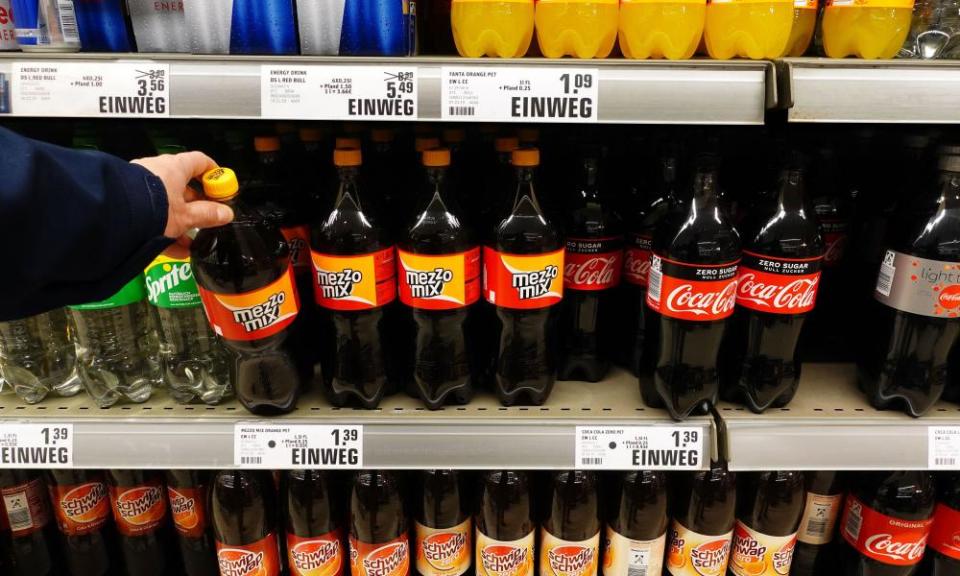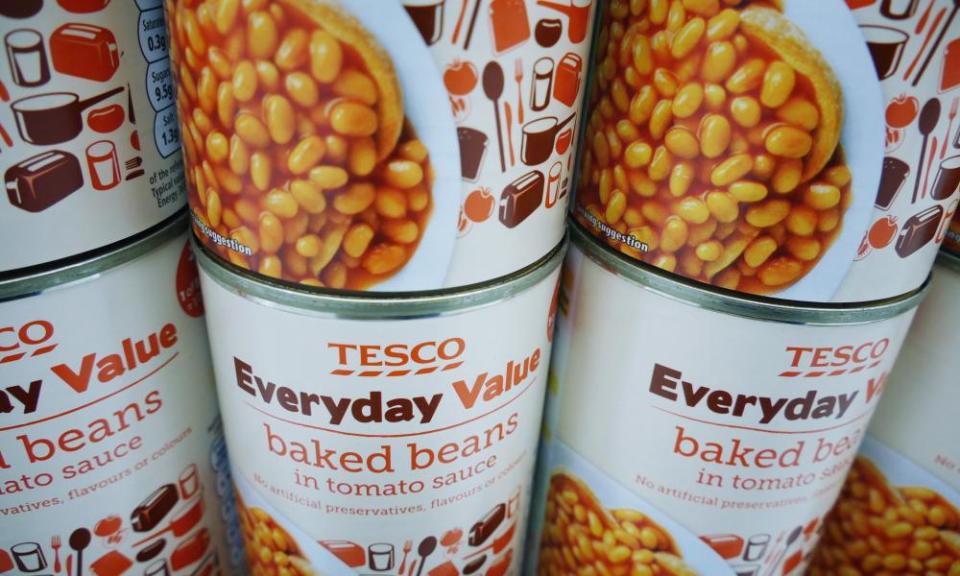‘It’s ridiculous’: shock as some UK grocery prices rise by more than 20%

At Sainsbury’s in Whitechapel, east London, the rising cost of food has forced Petra Emmanuel to change her shopping habits.
“Coupled with my utilities bill, it’s ridiculous,” the 51-year-old teacher said. “Even though I don’t buy branded foods, it’s the simplest items that have seemed to have gone up.
“I’ve had to cut down on my meat intake, and on fish too, because of the cost. They are like luxuries now, which I will buy only once or twice a week compared to, say five times a week that I used to do.”
Related: Cost of living crisis: how are UK supermarkets limiting price rises?
Her experience is being shared by shoppers across the UK who are facing “shelf shock” on almost all types of groceries. Research by Which? has found price rises of more than 20% on some goods, while official figures this week showed many staples have recorded double-digit increases.
Which? analysed the prices of more than 21,000 groceries, using average prices at eight big supermarkets, and compared costs for December last year to the end of February this year with the same period two years previously.
The analysis found that the prices of 265 lines had gone up by more than a fifth.
Which? said the items that had recorded the biggest price rises included a 500g box of Kellogg’s Crunchy Nut corn flakes cereal, which had gone up by 21.4% at Tesco, Asda’s own-label closed cup mushrooms (250g) which were up by the same percentage and Cathedral City extra mature cheddar (350g) which rose by 21.1% at Ocado.
The consumer group said it had examples of shrinkflation – where products were smaller but selling for the same price – and that between December 2021 and February this year the availability of some value ranges had been more limited than previously.
These ranges recorded the lowest inflation overall, with prices increasing by just 0.2%, while standard ranges rose by 2.8% and own-label premium ranges were up by 3.2%.

Across the 20 categories of groceries Which? looked at, fizzy drinks had the biggest average price rises, at 5.9%, followed by butters and spreads, at 4.9%.
On Wednesday, the Office for National Statistics reported food and drink prices were up by an average of 6% year on year, but some everyday products, including milk and pasta, had increased by more than 10%. Its figures, which cover the year to April, suggest many of the items Which? reviewed will be even more expensive now.
Sue Davies, the Which? head of food policy and consumer rights, said “eye-watering” price rises were being exacerbated by other factors to put “huge pressure” on household shopping budgets.
“During an unrelenting cost of living crisis, consumers should be able to easily choose the best value product for them without worrying about shrinkflation or whether their local store stocks budget ranges.”
Supermarket value ranges came under the spotlight in January when the food campaigner Jack Monroe said some shoppers were experiencing huge price inflation because they were unable to access the cheapest products at their local shops.
Since then Asda has committed to making its cheapest ranges available in all of its 581 food stores and online.
Retailers said they were committed to making budget ranges available and to keeping down the cost of shopping.

A Tesco spokesperson said: “We are committed to providing great value for our customers, whether it’s promising low everyday prices on 1,600 staples, price matching about 650 basics to Aldi prices, or offering exclusive deals and rewards through thousands of Clubcard prices.”
This week the government announced it was delaying a ban on “buy one, get one free” offers on junk food in response to the cost of living crisis, but some Tesco and Sainsbury’s said they would go ahead with scrapping these promotions.
‘I tend to look for the bargains”
The Guardian spoke to several shoppers in the Sainsbury’s in Whitechapel about how the increased cost of food prices has affected them.
Sharon Adams, who is 37 and works in merchandise, says that the increased cost of food prices has really shocked her.
“I almost had a heart attack when I managed to spend £20 on my food shop last Sunday, despite not buying any fresh fruit or vegetables, meat, or bread,” Adams said. “This time last year, I wouldn’t even really check or notice the cost of food. But now it’s something I’m much more mindful about.”
As a consequence of the rising cost of her food shop, Adams has altered the way she shops for groceries and plans her meals, such as using food waste apps, such as Too Good to Go, in order to reduce her grocery shopping bill.
“I rarely try to even try to shop in supermarkets any more and so I try to find alternatives,” Adams said. “I now use the Too Good to Go food app. It’s forced me to change my way of cooking, I now will cook anything I’m able to get off the app, and make use of that. Then I’ll just use supermarkets to top up on necessities that I really need that I don’t get through the app.”
Christina Davis, who is a teaching assistant, has noticed her food shop rise significantly. “I tend to look for the bargains when it comes to more expensive items, such as bread and meat,” she said.
Davis has been particularly shocked by the rising price of coffee, meat, and oil in particular. “I don’t think the government and doing much to help ordinary people,” she said. “They’re just putting everything up, with gas and electricity and now food.”

 Yahoo Movies
Yahoo Movies 
